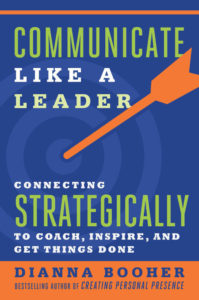


Whether you’re talking football, engineering, or acting, you’ve seen the best and brightest make mistakes. Fumbles, crashes, bloopers—the losses can be minor or tragic. Likewise, in business presentations. Mistakes can cost a sale, a promotion, or a career.
Speakers, of course, don’t intend to irritate audience members and set their teeth on edge. But let them unintentionally deliver a few lines like these and watch what happens: “As I travel around the globe each year, ….” “In my interactions with Fortune 500 CEOs weekly, … they say to me, John, you’ve got to help me solve …” “So I pulled out a $100 bill, handed it to the bell captain, and told him that package had better be in my room before I was.” “My spouse and I were at the Ritz Carlton last weekend when …” Douse people with a few of these comments, and see how fast they shrink emotionally.
In addition to ego-filled references that the audience can’t relate to, arrogance rears its head in many other ways:
Audience members notice behavior both “on–” and “off stage.” A prickly personality often drowns out the message.
All things being equal, audiences generally side with one of their own because the audience member is the “underdog.” A speaker holds the position of power at the beginning of an encounter—the microphone, attention, an introduction, and credibility. But once a speaker “jumps into the fray” and becomes confrontational with someone, he or she loses that original position of respect and credibility. Better responses: “I see things differently.” “My take on that issue is ….” “My experience with that software tells me that ….” Bouncing angry barbs back and forth lowers, rather than raises, authority and respect.
Be prepared. There’s no excuse for lack of preparation on things within your control: data you should have gathered, numbers you should have crunched, calls you should have made, interviews you should have done. If you don’t have it and aren’t prepared to share it, don’t wave that flag. Apologizing for lack of preparation doesn’t help.
Never make statements like, “I’ll take two more questions.” What if your audience has only one more question? The impression created is that the group isn’t all that interested in what you have to say. Or worse, what if the second question is a negative one? You certainly don’t want to end your Q-and-A period on a negative issue. When you’ve decided to stop taking questions, just stop. No need to give a warning.
Always deliver your polished wrap-up comments after the informal question session. Otherwise, your presentation or speech simply limps to a close. End with a wallop, not a whimper.
You’ll notice that none of the above deals with content. Your audience expects your content to be accurate, relevant, and engaging. What tips the table in your favor? Exceptional delivery—“the little things.”
Learn more ways to improve the delivery of your presentations with Communicate Like a Leader: Connecting Strategically to Coach, Inspire, and Get Things Done
